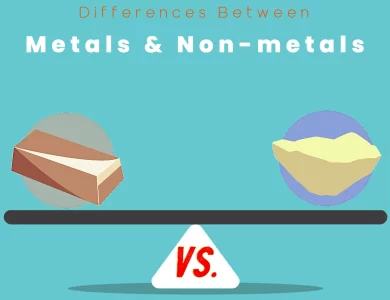Physics Science
Our comprehensive category page dedicated to exploring the intriguing world of differences in terms and other items in the field of Physics Science! Here, we delve into the various concepts, theories, and phenomena that make up the fundamental building blocks of this captivating scientific discipline. Whether you’re a physics enthusiast, a student, or simply curious about the workings of the universe, this page is your go-to resource for unraveling the mysteries of physics.
Physics is a vast and diverse field, encompassing a wide range of sub-disciplines and specialized areas of study. Within this expansive realm, there exist numerous terms and concepts that may seem similar at first glance but possess subtle yet crucial differences. By understanding these nuances, we can deepen our knowledge and appreciation for the intricacies of the physical world.
-

Boiling vs Evaporation
In the fascinating realm of phase transitions, two common yet distinct processes, evaporation and boiling, stand apart. Evaporation, a slow and gentle transformation, unfolds at temperatures below a liquid's boiling point, often imperceptibly. It's the subtle disappearance of a puddle under the sun's warmth or the refreshing coolness of sweat evaporating from your skin. In contrast, boiling is an energetic spectacle, a rapid and vigorous shift that takes place right at the boiling point, producing bubbles and steam. Picture a pot of water on a stove, its surface alive with tumultuous bubbles dancing their way to freedom. These processes, though seemingly ordinary, have profound implications. Evaporation is the quiet force behind the water cycle and climate regulation, while boiling is the culinary magic that transforms raw ingredients into delectable meals. Beyond the kitchen and the atmosphere, both processes play pivotal roles in scientific research, environmental management, and technological innovation. So, join us on a journey as we unravel the intricate differences between evaporation and boiling, shedding light on their unique attributes and the diverse domains they influence.
-

Turquoise vs Aqua
In the realm of colors, Aqua and Turquoise stand as enchanting members of the blue-green spectrum. While they share common elements, these shades possess distinctive characteristics that can significantly impact design choices, moods, and cultural symbolism. Aqua, with its lighter and cooler undertones, leans towards a refreshing, aquatic aura. It evokes the tranquility of clear waters, making it a favored choice for creating serene environments. Aqua often finds its place in coastal-themed interiors, spa decor, and the fashion world, particularly in summer collections. Turquoise, in contrast, boasts a deeper and more vivid hue with a pronounced presence of green. This vibrant color exudes energy and positivity, often making a bold statement in fashion, creative spaces, and high-end jewelry. Its cultural significance stretches across time, from being a protective talisman in Native American traditions to a symbol of spiritual growth and healing. When deciding between Aqua and Turquoise, consider the emotions and ambiance you wish to convey. Aqua for calmness and modernity, or Turquoise for vibrancy and spirituality. These colors, each with its unique charm, offer endless possibilities for self-expression and creativity in the colorful tapestry of life.
-

Non-Metals vs Metals
Welcome to a captivating journey through the captivating realms of metals and non-metals. In this blog, we'll uncover the secrets behind these elemental entities and explore their unique properties, applications, and significance in our everyday lives. From the shiny brilliance of metals to the versatile characteristics of non-metals, we'll delve into their distinct attributes that shape our physical world. Metals, with their characteristic metallic luster, exceptional strength, and conductivity, find applications in construction, transportation, electronics, and jewelry. Meanwhile, non-metals, which lack the metallic luster, exhibit diverse properties and play vital roles in healthcare, energy production, agriculture, and beyond. We'll delve into their contrasting physical and chemical properties, from malleability and ductility to their reactivity and bonding characteristics. Join us on this captivating adventure as we explore the interplay between metals and non-metals, their impact on our environment, and the importance of sustainable practices. We'll unravel the mysteries behind their extraction, production, and disposal, while highlighting the efforts being made to minimize their environmental footprint. By the end of this blog, you'll gain a deeper understanding of how metals and non-metals shape our world and the steps we can take to foster a more sustainable future. So, get ready to embark on a journey through the wonders of metals and non-metals, where shimmering brilliance and versatile properties await. Let's delve into the captivating world of elements and expand our knowledge of these fundamental components that surround us.
-

River vs Creek
Welcome to the fascinating world of rivers and creeks, where nature's flowing water brings beauty, serenity, and adventure. In this captivating exploration, we'll dive deep into the differences and similarities between these two enchanting water bodies. Rivers, with their grandeur and vastness, carve their way through landscapes, spanning great distances and serving as lifelines for entire regions. On the other hand, creeks, with their smaller scale and intimate charm, meander through forests and meadows, creating picturesque scenes of tranquility. While rivers and creeks may differ in size, flow, and surrounding landscapes, they both play vital roles in ecosystems and offer a myriad of recreational opportunities. Rivers, with their continuous and steady flow, provide sustenance to diverse habitats, support trade and commerce, and serve as important water sources for communities. Creeks, on a smaller scale, offer intimate settings for peaceful walks, wildlife habitats, and a source of inspiration for artists and photographers. Join us on this captivating journey as we unravel the secrets that rivers and creeks hold. Explore their ecological importance, learn about their cultural significance, and discover the ways in which they shape the land and our interactions with it. Whether you find yourself in awe of a mighty river or enchanted by the gentle flow of a creek, you'll come away with a deeper appreciation for these mesmerizing water bodies. So, grab your virtual paddle and let's set sail on this adventure of exploration and discovery!



